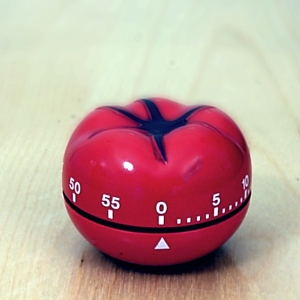I know what you’re thinking, what’s fuzz got to do with a tomato, right? I’ll have anatomy whiz Gil Hedley start us off… (Hint: it has nothing to do with law enforcement.)
This video is of the older variety (circa 2009), which I consider a good thing. It’s stood the test of time- what Gil was “ranting” about still holds true! Gil put up an update on The Fuzz on his Facebook page in 2012, and I have reproduced parts of it for your convenience below (emphasis added):
The Fuzz Speech is an oft viewed rant which I put up on YouTube a couple of years ago. Folks seem to love it, it inspires clients to move. Everything I say in it with respect to visceral adhesions is basically correct.
What is not correct in The Fuzz Speech is the impression that it gives that “the fuzz” does not belong there. The Fuzz does belong there.
It is what I now refer to as “filmy fascia” in traction. When I am dissecting, I lift filmy fascia, and it looks like cotton candy because its inner structure is that of a loose, omnidirectional fiber array. Filmy fascia is loose, aereolar connective tissue with relatively minimal adipocyte proliferation which intervenes at specifically predictable places between superficial and deep fascia, between deep fascia and muscle, and between specific compartmentalizations within the muscle layer.
In the Fuzz Speech one might carry away the impression that movement or bodywork “eradicates” the fuzz. In fact movement and bodywork hydrates, and improves the distensibility of fuzz, and probably also, when this is accomplished, diminishes excessive bonding within the filmy fasciae. But it does not “make it go away,” because it not only belongs there, it is exactly why we are able to move at all.
Without the fuzz, our tissues would be just a frozen agglommeration. The distensibility of the filmy fascia gives our tissue a range of motion, not infinite, but fixed. So between skin and superficial fascia there is no “filmy fascial interface,” so there is no relative motion between those two layers. Where there is filmy fascia, there is the potential for relative motion between the layers.
In the viscera the serous membranes are sliding surfaces. If “fuzz” grows between those surfaces I can identify this as pathology immediately. If there is “too much” fuzz between layers where some already belongs, it is very difficult for me to say so just looking at it in the lab.
***
Gil Hedley is a self-ascribed “somanaut”: like the astronaut who navigates outer space, the “somanaut” is dedicated to exploring the inner space of human form. 😛 For more on him, visit his blog or Facebook page. For more awesome anatomy videos, check out his YouTube page.
***
Bottom line? Keep it moving & grooving!
I will say, I only recently started feeling better after exercise. My body was so used to being sedentary, it had adapted to it. It felt better stuck in place. Until now (read: after almost 2 years of being regularly active on the road, so it can take time). Now I feel the most shoulder pain after a day or two of inactivity, versus after a day of hard climbing. Hooray!
How about when you’re stuck at a computer all day? I know that we have more opportunity to get outdoors than the average person, but we still spend our rest days at the local coffee shop. Sitting.
I’m now starting to use the Pomodoro Technique (also referred to as the Pomodoro Method). This time management system was invented by Francesco Cirillo in the 1980s while he was a university student. It involves picking a task to accomplish and then breaking your work time into 25 minute intervals. After 25 minutes of work, you will take a 5 minute break. DO NOT CHECK FACEBOOK. Seriously. Get up and stretch, put your legs up on a wall, or just walk around. Look out your window, whatever you do- just be sure it involves moving and not staring at your screen. The last bit of it is every 4th ‘pomodori’ you take a longer break of 15-20 minutes.

The Pomodoro Technique is named after the tomato-shaped kitchen timer that was first used by Francesco Cirillo when he was a university student. Now, we have smart phones and, well, there’s an app for that. Check ’em out here.
I was introduced to The Fuzz Speech by Paisley Close, a yoga teacher who shares my love for fascia release. Thank you, Paisley! Check out her blog here for loads of useful posts on yoga & beyond…like this one on a single pose that does it all for your shoulders. Damn useful for all climbers since we are prone to shoulder injury!
